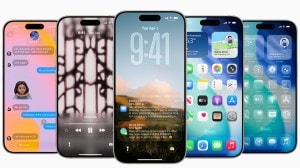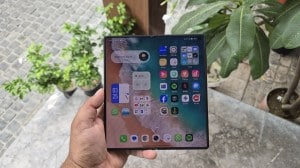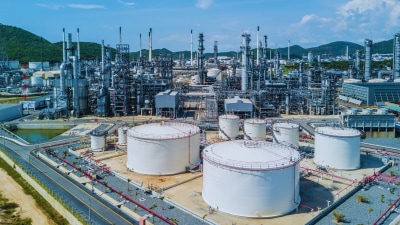By Sachin Venugopal
India is a young country with its 65% population under 35 years of age. This group of people is those who also spend a significant 51 hours per week into work thrashing the recommended 48 hours per week regulation by the labor law India.
Furthermore, as a part of its Price and Earning Report in 2018, Swiss investment bank UBS revealed that Mumbai professionals work for the longest hours followed by Hanoi, Mexico City, and New Delhi. On the other side, Lagos, Rome, and Copenhagen are the countries where employees put the least number of working hours.
What it makes out from the above revelation is that, for Indian professionals office or workplace is the second home; where they spend one-third of their entire day. It is in this context that we see big companies like Google, Facebook, Microsoft or online retailer Flipkart have designed their workplaces in a captivating way to keep engaging its versatile young pool of talents.
Also read | Ramadan: Young gen spending more time on Facebook and YouTube during the holy month, reveals data
Workplace design largely revolves around the company’s culture. Depending on whether it’s a collaborative, open or cubicle culture, the office design gets shaped. For instance, IT development companies may prefer a non-chaotic office design where it’s people can concentrate on coding and development, a law form or an accounting form may need confidentiality as opposed to open collaborative areas, whereas an advertising company may go for more open or collaborative workspace design. It is simply, function dictates form.
Organizations these days put a lot of attention in designing the interior where we find the following trends quite relevant:
Smart furniture
There is plenty of innovation happening in getting the furniture designed for new age workplaces. Today furniture is designed keeping in mind comfort, space requirement and look. Besides on a comfortable chair, smart and small discussions are happening around a standing-meeting point around a table. Such smart, small table in the corner of a cabin is also making an entry. For example, Walmart India office has this very culture where two-three employees while grabbing a cup of coffee gather around a standing table to discuss matters, this to balance out the monotonous hours of working at desks. Likewise, along with smart, sustainable, eco-friendly furniture is also in vogue these days.
Colours and Textures
Colours and textures bring brightness and create an open, happy and inclusive work environment for its employees. For that matter, different shades of white are also becoming quite popular with companies opting for vibrant workplaces. Wooden texture usually balances out the whites with an amount of warmth. As such, interiors with set color patterns are more in demand in offices where open discussions are more required. Also, a minimalist office with a clutter-free zone with a sleek layout, and more smart furniture is a trend to stay-just that the office is that much more functional.
Greens
The idea of “green design” could mean different things to different people. Some view green design as environmentally friendly construction and architecture practices. Others interpret green design as ways to improve employee wellness through layout and building features.
People who work in a “green” office, literally surrounded by plants, are happier than people in “lean” offices without live foliage, suggests a new study. Further, it emerged that when we work in green-certified offices, we get a 26% boost in cognition, and 30% fewer sickness related absences. What’s more, respondents also reported a 6% rise in their sleep quality.
Office designs are also getting created to promote green. Investments in air handling units to improve air quality and larger window panes are getting promoted. Living walls and water curtains are also in use to bring in the natural look and boost light levels. Additionally, plants in all forms to improve air quality and overall inside office environment is hugely appreciated in offices. These steps also add greenery and reduce carbon footprint.
Recreational Areas
These areas form an integral part of office design layout these days. This is a more complete approach of bringing home to work where one can enjoy them taking a break from work. Table Tennis, Billiards have been in use for quite some time in India’s corporate work culture. Today, there is place for the Xbox and Playstation in the office. This doubled up with a dry pantry serving hot beverages is a thing of present. These areas essentially improve teamwork, team collaboration among employees.
Unconventional work spaces
Booth seating, collaborative spaces, scrum areas, swings, bean bags, couches, lounge type seats to name a few, there are a variety of seating options in the office spaces today which are unconventional, may have been even radical to think of a few years ago.
Beans bag, couches in the open area also make employees take a break from their conventional desk and do the work while sitting on a casual bean bag or surrender oneself on a soft leather couch. Earlier office designs focused on just one aspect of the employee ie. Productivity, but of late this conversation is expanding to include a more holistic, employee-centric and point. Adjustable furnishings such as height adjustable work surfaces, seating and monitor arms in primary work-space and meeting spaces reduce the risk of ill health affecting people’s ability to work. We see significant opportunities to effectively use workspace design to promote an enduring state of wellbeing.
Some of the more specific design elements that have made inroads to Indian workplaces design today include 3D installations spaces, meditation rooms, Quirky meeting room and phone booths, Motivational mural wall spaces, trendy and cafeteria designs and Employee appreciation walls or walls of fame. All put together, the workspace design has to keep pace with the ever changing requirement of employees. There is surely more to come in office design with technology and lifestyle changes in this decade.
(The author is Founder & Principal Architect at Design Lattice. Views expressed are personal.)









